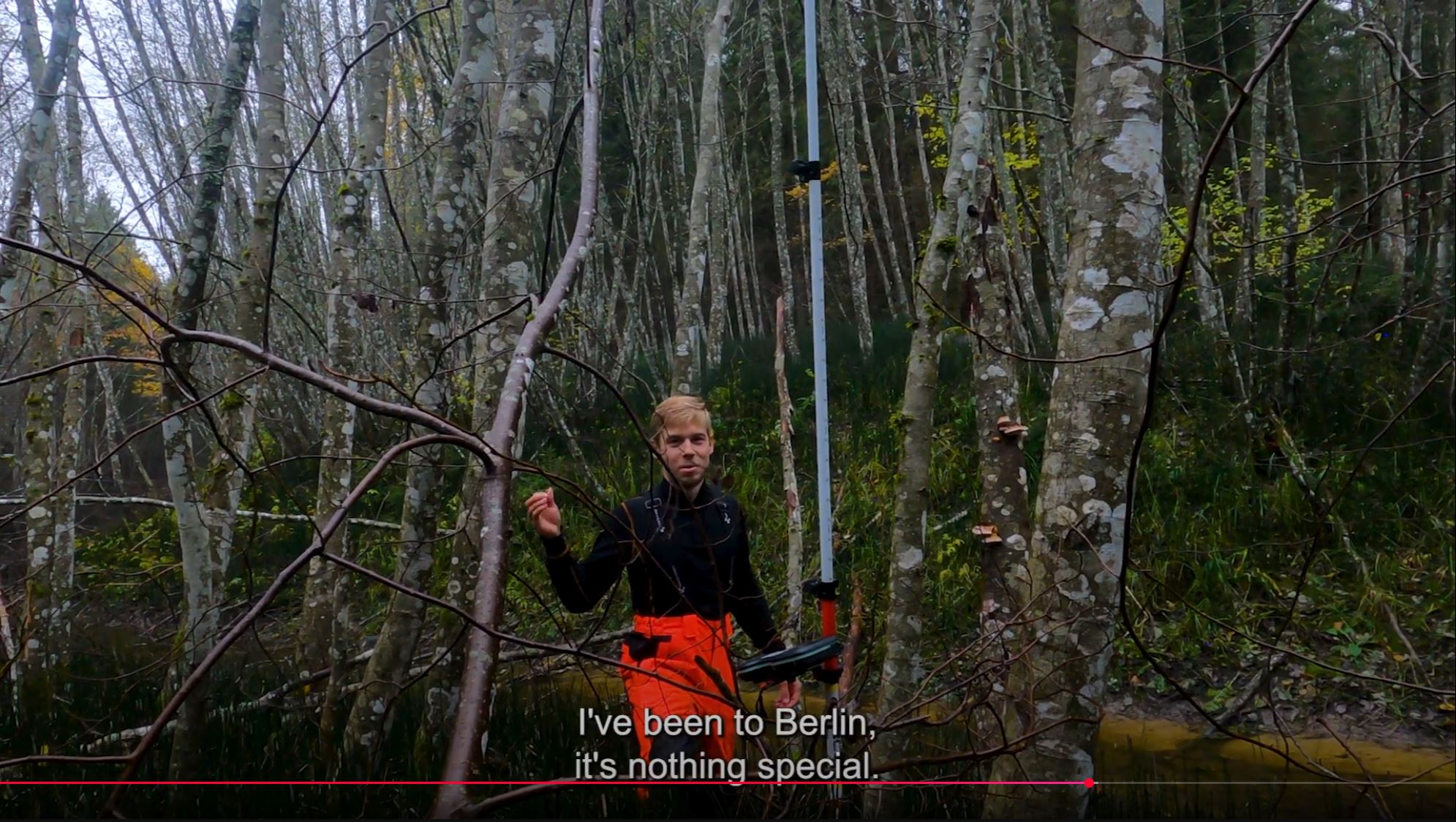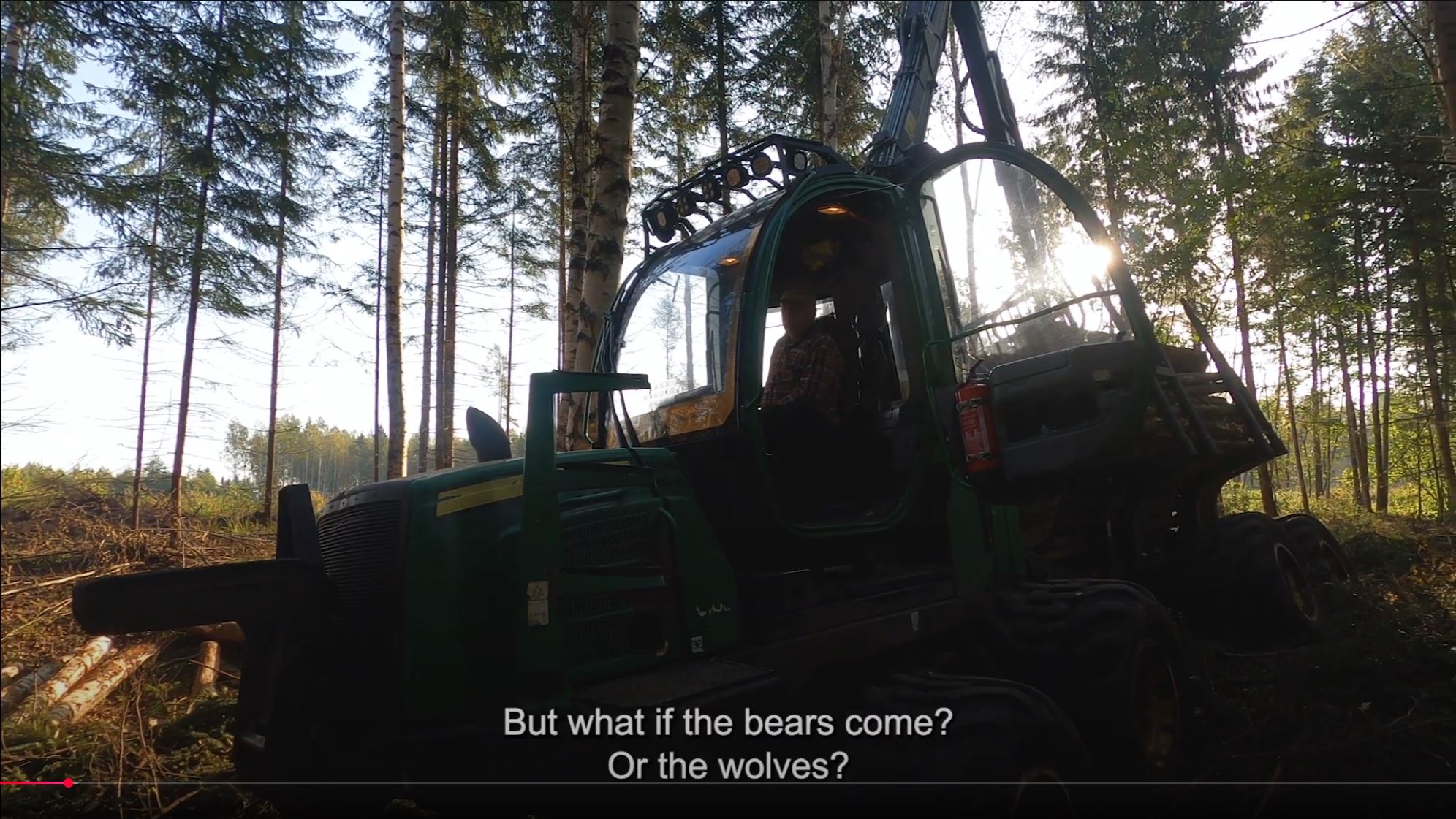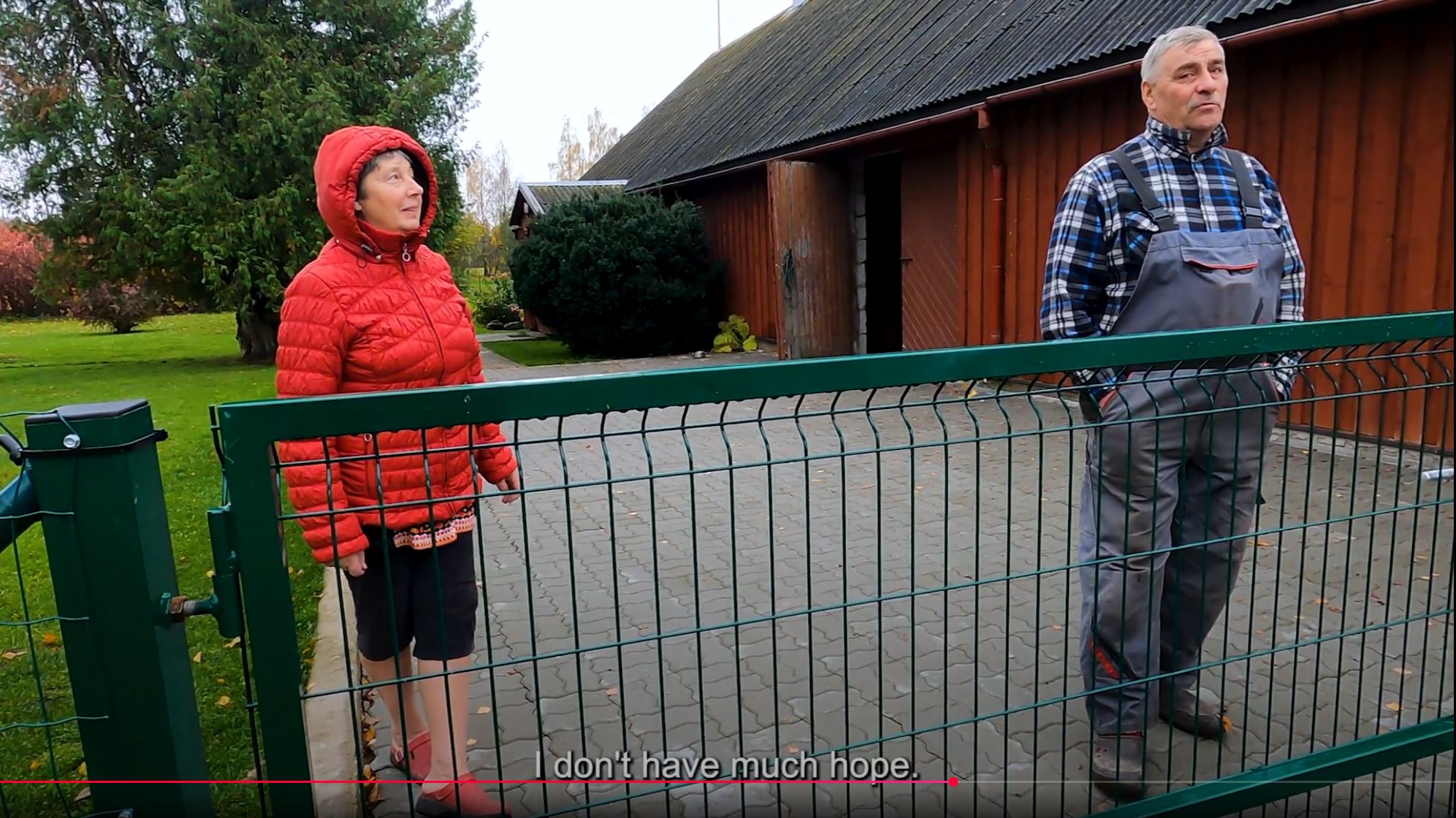“The documentary film follows one woman’s journey along the future corridor of the Rail Baltic railway. Attempting to livestream her entire 213 km trek, artist Hanna Samoson encounters people whose lives will soon become inseparably linked to the new railroad. Through hope, humor, and the pain of loss, the film reveals how those affected by this grand project truly feel.
Against the backdrop of an unbroken landscape—destined, by all signs, to soon change—the story unfolds. This could just as easily be a story about the Nursipalu military training area, the wind farms of Saaremaa, the pulp mill by the Emajõgi river, or the planned nuclear power plant: in each case, great technological ambitions collide with the wish to preserve something deeply important to someone among us.
This is not a conventional documentary. It’s a road movie winding through Estonia’s undergrowth, ditches, bogs, and forest groves. The encounters with people along the way are spontaneous, candid, and sincere.
This film does not take sides for or against Rail Baltic. Instead, it presents a diversity of opinions, the process of adapting to change, and captures the lives and landscapes of Estonia in a fleeting moment of time.”
Directed by Marianne Kõrver




